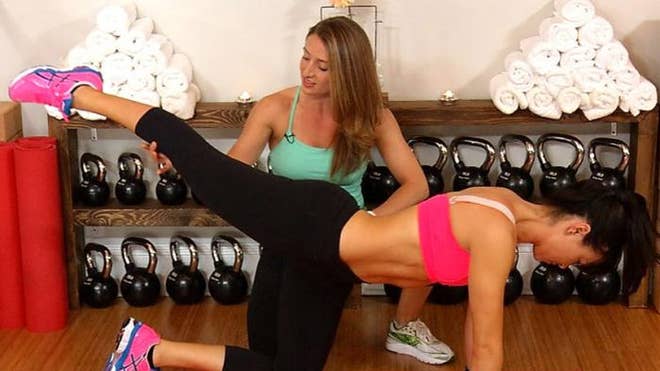It may sound a little strange when we tell you to “warm up” your entire body, especially when you feel that your pain is localized in one area like your jaw, neck, or shoulder, and you just want to get started on resolving that particular issue.
But this initial aerobic workout (lasting for 10 to 20 minutes) is one of the first things you should do before you ever begin working on your injured or restricted areas, and definitely before you begin any exercise routine.
Improving Cellular Function with Aerobic Exercises
Aerobic exercise is the fastest way to increase the strength and function of your cardiovascular system. By increasing the density of capillaries, you are able to get more nutrients into your muscular tissue, thereby helping them to heal and perform better.
The increased density of capillaries means that you are better able to eliminate the waste by-products of healing and metabolism from your cells, again allowing them to perform more efficiently.
Aerobic exercise also increases the function of mitochondria in your cells. This increased mitochondrial function immediately boosts your body’s ability to generate power and energy since your mitochondria are the principal energy generators for your cells.
Mitochondria convert existing nutrients into ATP (adenosine triphosphate), a form of energy that is readily usable by all the cells in your body. Your body uses this energy to perform all of its functions – from healing existing injuries, to eliminating waste, to powering your muscles when you walk, talk, or perform any action.
As we age, or when we injure ourselves, our ability to produce ATP decreases. Exercise is one of the few factors that will naturally increase ATP production to give you increased energy.
Aerobic Warm-Ups how they helped resolve my injury!
I have had a personal experience that showed me the importance of cardiovascular warm-ups as they relate to recovering from an injury.
I am speaking about an injury for which most people would never perform an aerobic workout. A few years ago I suffered from a severe case of Bell’s Palsy (weakness of the nerve that innervates and controls the muscles for facial expression) on one-half of the face.
Bell’s Palsy left me with the muscles of one-half of my face paralyzed and expressionless. I was told it would take 3 to 6 months before normal nerve function would be restored!
I was unwilling to live with this condition for that long and immediately researched means for reducing this time frame. One of the first things I did after getting Bell’s Palsy was to get on my road bike/wind trainer for at least 20 to 30 minutes each day. I followed this up with TMJ massage and a variety of jaw, neck, and shoulder exercises.
To everyone’s amazement, I recovered fully, with complete neuromuscular control of the muscles in my face, within about a month. I am convinced that my daily aerobic exercise is one of the major reasons I got over this condition in about a third of the normal time. The aerobic exercises I did every day resulted in increased circulatory function and improved mitochondrial activity (energy production)!
So take the time to do your aerobic warm-up before doing rehabilitative exercise programs...you will be amazed at the difference it makes in your healing, recovery, power, and strength development!
So What is a Good Warm-up?
A good warm-up should include all the large muscles of your body and include movements that increase your heart rate and breathing. This is a good opportunity to listen to your body, and recognize any injury, tight spots, or restrictions that you may have to accommodate during your exercise routine.
- Go for a brisk 10–to–20 minute walk. Make sure you move your shoulders and swing your arms. Good upper extremity motion takes the stress off your back and helps you to store and release energy from your core. Don’t walk at a slow pace, this will not achieve the desired results and is actually quite hard on your back compared to brisk walking.
- Jog, or run for 10 to 20 minutes. If you are not a runner, start with a brisk walk interspersed with a few short jogs. If you are a runner, make sure you maintain a good upright posture with good shoulder movement, and make sure you land on the middle of your feet. No toe or heel running as this deactivates your gluteals and causes a lot of other problems. Treadmills are fine but do not increase your elevation too much.
- Swim for 20 minutes. If you are doing the front crawl, make sure you breathe from both sides. You don’t want your warm- up to create neuromuscular imbalances because you breathe from just one side of your body.
- Use an elliptical or ski machine for 10 to 20 minutes. Both are good for reinforcing a cross-crawling pattern, which helps establish good neuromuscular control, as well as for warming up all the big muscles of your body.
- Ride a stationary bike for 10 to 20 minutes. This option is not my first choice due to the lack of motion in the upper extremity. In terms of bike types, I prefer the use of upright bikes much more since you can maintain better posture, especially if you have a history of back pain.
- Hula-hoop for 5 to 10 minutes. Most people may not think of this as an aerobic exercise, but it is! The hula-hoop is not only a lot of fun, but it is also a great way to learn how to properly brace your core – a key concept in core stability.
If you would like information about our clinic in Calgary Alberta please go to www.kinetichealth.ca.

No comments:
Post a Comment